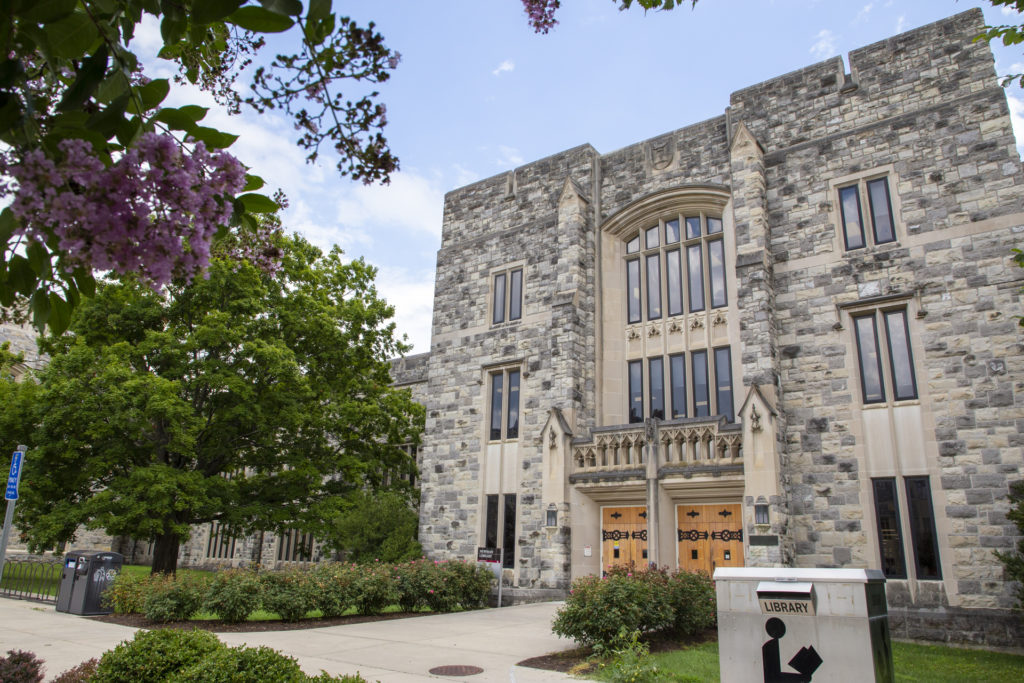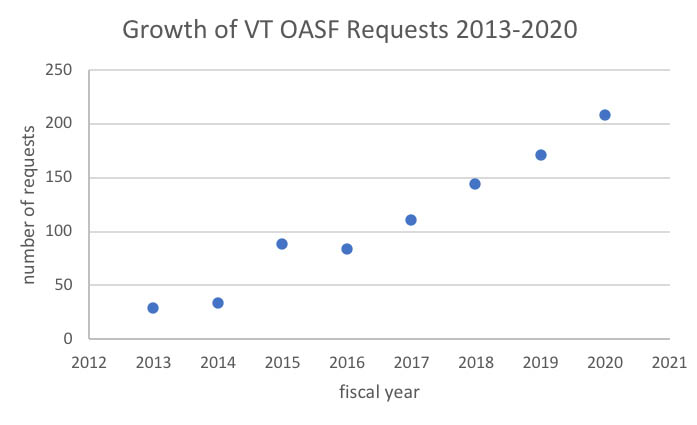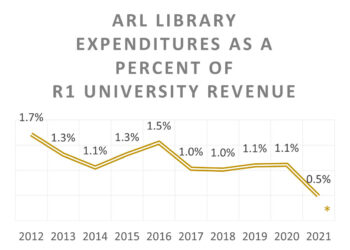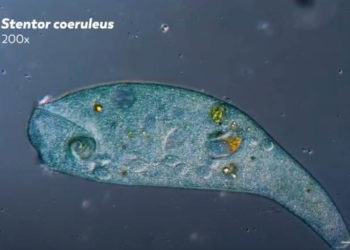Editor’s Note: Today’s post is by Gail McMillan, Director of Scholarly Communication, Leslie O’Brien, Director of Collections and Technical Services, and Edward F. Lener, Associate Director for Collection Management University Libraries at Virginia Tech.
After eight years of funding open access (OA) articles, University Libraries at Virginia Tech has a wealth of quantitative data on article processing charges (APC). However, we lacked qualitative information on authors’ perceptions about funding OA articles, how this funding supports research in specific disciplines, and how authors view OA publishing in general. Since the fund’s inception, the Library’s expenditures on APCs has increased over 500%, prompting us to ask authors about their perceptions of the Open Access Subvention Fund (OASF) as we consider its future development and sustainability.

The Open Access Subvention Fund
University Libraries at Virginia Tech (VT) established an Open Access Subvention Fund in August 2012. The OASF aligned with the Library’s strategic support of the research endeavors of the VT faculty, students, and staff, and providing unrestricted access to digital research and scholarship. The Library’s goals continue to be to:
- Support and promote OA publishing across the entire university community.
- Raise awareness among authors of the benefits of open publishing.
- Encourage new ways of thinking about digital scholarship and information access.
- Advertise reduced OA fees offered through Library publishing memberships.
The OASF was initially established as a jointly funded project by the Dean of Libraries, the Provost, and the Vice President for Research and Innovation. Started with a $24,000 budget for APCs in OA and hybrid OA journals, the allocation has increased steadily over time, reaching $150,000 in FY2020. After the seed money from the Provost and Vice President ended, the fund is now entirely supported by the Library’s collections budget. The Library has had sufficient funds to cover all requests that met the OASF Guidelines. However, the high rate of growth in requests in recent years, coupled with COVID-related budget pressures, may force us to cap expenditures going forward.

Assessing the Fund
In fall 2019 we conducted a survey of all the VT authors and co-authors who had requested APC support between August 2012 and October 2019. Our survey of 39 brief yes/no and multiple choice questions (with opportunities to comment) collected data in four areas: OASF awareness and use, OASF policy guidelines, OA journal publishing, and demographics of the survey population.
We sent the survey to 812 authors and co-authors; 269 completed it, for a 33% response rate.
The demographics of respondents show that all categories of eligible authors are applying to the fund:
- Professors 35%
- Associate professors 22%
- Assistant professors 21%
- Graduate students 13%
- Other 9%
(“Other” includes alumni, lab technicians, undergraduates, etc.)
- Tenured faculty 63%
- Tenure-track faculty 24%
- Not applicable 13%
(“Not applicable” includes graduate students, lab technicians, etc.)
About three-quarters of our survey respondents received OASF support for at least one article while nearly one-quarter of respondents’ requests were denied. Responses from authors in the sciences outnumbered those in the arts and social sciences more than six to one. Here are some highlights from the survey.
Perceived Value of Open Access Publishing
As context for understanding respondents’ views on the OASF, we wanted to learn about their views on the value of OA publishing more generally. Overall the attitudes were positive (perhaps not surprising given that those receiving the survey were seeking funding to publish OA) but the nuances are useful to understand.
- 56% of respondents felt that OA publishing should be a positive factor in promotion and tenure (P&T) considerations. But, 58% said it had not been discussed by any P&T committee they served on.
- 63% of the respondents received no special recognition from their departments for publishing an OA article.
- Only 20% of authors reported that they deposited their articles in VTechWorks (our institutional repository). This indicates they may not be aware of the added exposure that the repository could provide for their work. Or, they may believe that by publishing the work OA, there is no need to provide a duplicate a copy in VTechWorks. (Note: OASF-supported articles are deposited in VTechWorks by Scholarly Communication Department staff if the authors do not deposit them.)
- Authors are spreading the word about the OASF to their colleagues. While the Library uses a number of communication channels to advertise the fund, word of mouth seems to be very effective. Nearly 80% indicated that they passed on information they got from a Library session, and 49% of respondents said they learned about the fund from a colleague.
- Authors report encouraging others to publish in OA journals, including colleagues at VT (37%) and other universities (20%), graduate students (34%), and occasionally undergraduate students (8%).
It was heartening to learn that library recognition makes an impression. In 2015 we began including OASF recipients in the Annual VT Authors Recognition event hosted by the Library. This event was noted by a quarter of the authors who said they had been recognized in some fashion for their OA article.
Perceptions about VT’s Open Access Subvention Fund
Though we expected that those funded by the OASF would have a positive perspective on the fund, we wanted to understand their views in greater detail.
- Respondents overwhelmingly (98%) want the Library to continue to fund APCs for scholarly peer-reviewed articles in OA journals. A lone objection was from an author who stated that they don’t support Plan S; however, without any additional details we are not certain how that led to not supporting our local fund.
- The Library maintains an OASF Guide for applicants. 81% of respondents said it provided the information needed to make a successful request. Respondents offered suggestions for how to improve the Guide, such as adding a comprehensive list of OA journals in which to publish (an impossible goal!).
- If an author has an active grant that could cover the APC (e.g., NIH, NSF, or Gates Foundation), the publication is not eligible for OASF funding and the request is denied. Fifty-six percent of the respondents disagreed with this policy. They reported that they have already allocated all their grant funds and they do not feel they should be penalized for having outside funding.
- Researchers feel pressured to publish in high-profile journals and feel that “the university should have a vested interest in research conducted here being published in the best possible outlet.” Many respondents want the OASF guidelines to be less restrictive.
- We increased the maximum award per article from $1,500 to $2,000 in July 2019 in response to authors’ input and recognition of the rising costs of APCs. The majority of our respondents (66%) agreed that the $2,000 maximum award was adequate. However, 21% of respondents pointed out that many APCs are higher than $2000, especially for highly regarded journals. Nature Communications and Science Advances were mentioned several times. Authors also commented on Elsevier having particularly high APCs.
- Hybrid journals are a source of controversy. Until January 2019 the OASF supported APCs in OA and hybrid OA journals. We ceased funding hybrid OA journals due to lack of evidence that publishers were reducing subscription costs due to APC payments. Of the authors whose requests were denied, 60% favored funding hybrid OA APCs, and we received more than 80 comments in support of hybrid OA journals. 39% of total respondents disagreed with our decision to cease funding APCs in those journals. Not allowing hybrid APCs is leading to a perception that the Library is limiting faculty options for publishing their research.
Take-Away Reflections and Future Research
Despite some differing opinions about our guidelines, survey respondents were overwhelmingly enthusiastic about the OASF. Most importantly, the OASF has a significant impact on authors’ ability to get their research into the open. Some specific comments from respondents:
“Without this financial resource, I would NOT have published as many articles this year. It is having a real and measurable impact.”
“I did not decide to publish my work OA – I decided to send my work to the most suitable journal, which happened to be OA.”
“When trying to build a new research program from scratch, getting preliminary data published is vital and OASF is critical in helping to bridge the gap until an extramural support can be obtained based on the OASF published data showing proof of concept.”
“I think having this opportunity is very important for graduate students and amateur researchers who have not established their niche. In my experience with VT OASF, it worked very well and I highly support this program. Your partnership with good journals for discount programs has been a great idea.”
Our main purpose in conducting this survey was to learn how VT researchers viewed the OASF. We wanted to gauge the level of awareness among various populations to find out if we needed to do more in the way of outreach or tweak our policies. The good response rate to the survey and the soaring increase in funding requests indicate that there is strong awareness among faculty and graduate students about the fund.
Some of the topics we’ve considered for further research are:
- What is Virginia Tech’s total spend on APCs beyond the OASF? We know that authors have other sources of funding and the university is spending much more than the Library’s $150,000. Carnegie Mellon University Libraries and others have collaborated with their central purchasing units to expose the full costs of APCs at their institutions. We’re interested in doing a similar analysis.
- How do perceptions of OA compare across disciplines and across demographic groups?
- How can the Library encourage researchers to budget APCs into their grant proposals? Is the OASF a catalyst for those who do so? One respondent said that “The OASF funding has been essential to me publishing in OA journals. … Now if I get another NSF grant, I will budget for publishing in OA journals.” Could we build on that?
- Do graduate students feel that their future careers will benefit from the articles they have published through our fund?
Researchers’ enthusiasm as expressed in the survey responses as well as evidence of impact on OA publishing we can track more generally motivates us to explore these questions at Virginia Tech.
Acknowledgements: Thanks to Lisa Janicke Hinchliffe for her really helpful editorial suggestions, Nathaniel Porter for helping us organize and refine the survey questions, and Carrie Cross for her support with administering the survey and gathering data.
Discussion
10 Thoughts on "Guest Post — Assessing User Perceptions of an Open Access Subvention Fund"
The number of 2020 requests to the VT OASF is already >200. At what date was this graph completed? At the present rate of requests, when will the fund be extinguished? And if extinguished, is library likely to expand the fund, restrict its uses, or invoke a plan to ration resources among requestors?
The graph was created in August and it displays information for fiscal years ending June 30. The OASF funded every request that met the guidelines through FY2020. Requests are evaluated on a first come, first considered bases. At this time of Covid-19 effected budgets, when the (likely to be) allocated $150,000 has been awarded, we will probably not be able to fill any further requests in FY2021.
This was really interesting. Thank you! I’d be curious about the perceptions of authors who did not request APC support, either because they had all the APC funding required or did not publish in an APC based journal. That said, it is great to get the direct opinions of a large number of OA-committed authors.
If an author has an active grant that could cover the APC (e.g., NIH, NSF, or Gates Foundation), the publication is not eligible for OASF funding and the request is denied. Fifty-six percent of the respondents disagreed with this policy. They reported that they have already allocated all their grant funds and they do not feel they should be penalized for having outside funding.
I think this is a particularly important finding from the survey, one that is well in line with the long understood concept that while everyone loves open access, no one wants to pay for it. The continuing reluctance by researchers to put their grant funds toward publication expenses should be noted in the many proposed and implemented policies that assume that researchers will readily take funds out of their research budgets in order to supplement what’s available from the library/university. Funds are scarce for researchers and in my experience, they’re very protective of those funds (particularly when those funds are paying the salaries of their students, postdocs, and technicians). One can’t assume that everyone with a grant will happily pay APCs out of that grant.
While reading, I thought that this was exactly the crux of the matter.
And it is precisely the point that initiatives like PlanS avoid putting it into concrete terms all the time. From the signing national funders there is currently exactly one (FWF) who takes care of the financial relief of the libraries in the course of, for example, some Read & Publish contracts. UKRI maybe a little bit through the block grants. The rest of national funders are silent or postpone answering financial questions ‘until new funding calls 2021’ although answers are urgently needed for the libraries. Think if libraries only had to pay for the R in the PAR fee, the financial relief would finally be there.
The author provides statistics about who applied to the fund, but not about who received funding. This matters because the fund should support developing scholars as much as it does established scholars. One of my concerns about funds like this is that publication will become even more difficult when one must go through some kind of university process to get the money to do so. The chances of this kind of process remaining simple, fair, and efficient are slim. Publication should not be held hostage to some kind of committee.
We are working on an article for an OA journal where we will speak more to the demographics we collected. We are particularly looking at how the funds were distributed to graduate students and various ranks of faculty. We’ll describe these authors’ perceptions of the issues described in this blog and other issues such as how they used the published article, people and factors influencing their choice to publish OA, and their opinions of whether OA should factor into promotion and tenure discussions. We have indeed tried to keep the VT OASF process simple, fair, and efficient with quick turn-around-time, even while the number of requests grew from 28 to 208.
Is there any indication that this budget will increase? Is there any data if collections have suffered? The library is there for both the academic community and the citizens of the state. How has the diversion of monies to a few impacted the many?
On what basis is the library parsing requests? In short, if it says nay to A and yeah to B and A fails to get tenure is the library/university opening itself to a suit
Lastly, should the library be a granting agency and if so on the basis of what criteria? After all what does the library know about research in highly sophisticated areas of scholarship!
VT, like many academic institutions, is facing budget cuts for 2021. The budget for the Open Access Subvention Fund will most likely stay at the 2020 level, even while other library resources are cut. Funding OA articles removes the paywall, and hopefully broadens the impact of the research. Our funding guidelines and criteria are posted publicly (linked in the post); we strive to be inclusive and fair in order to benefit as many authors as possible.
Very interesting! Has the mentioned analysis of total APC expenditures from Carnegie Mellon University Libraries (and others) been published somewhere?



